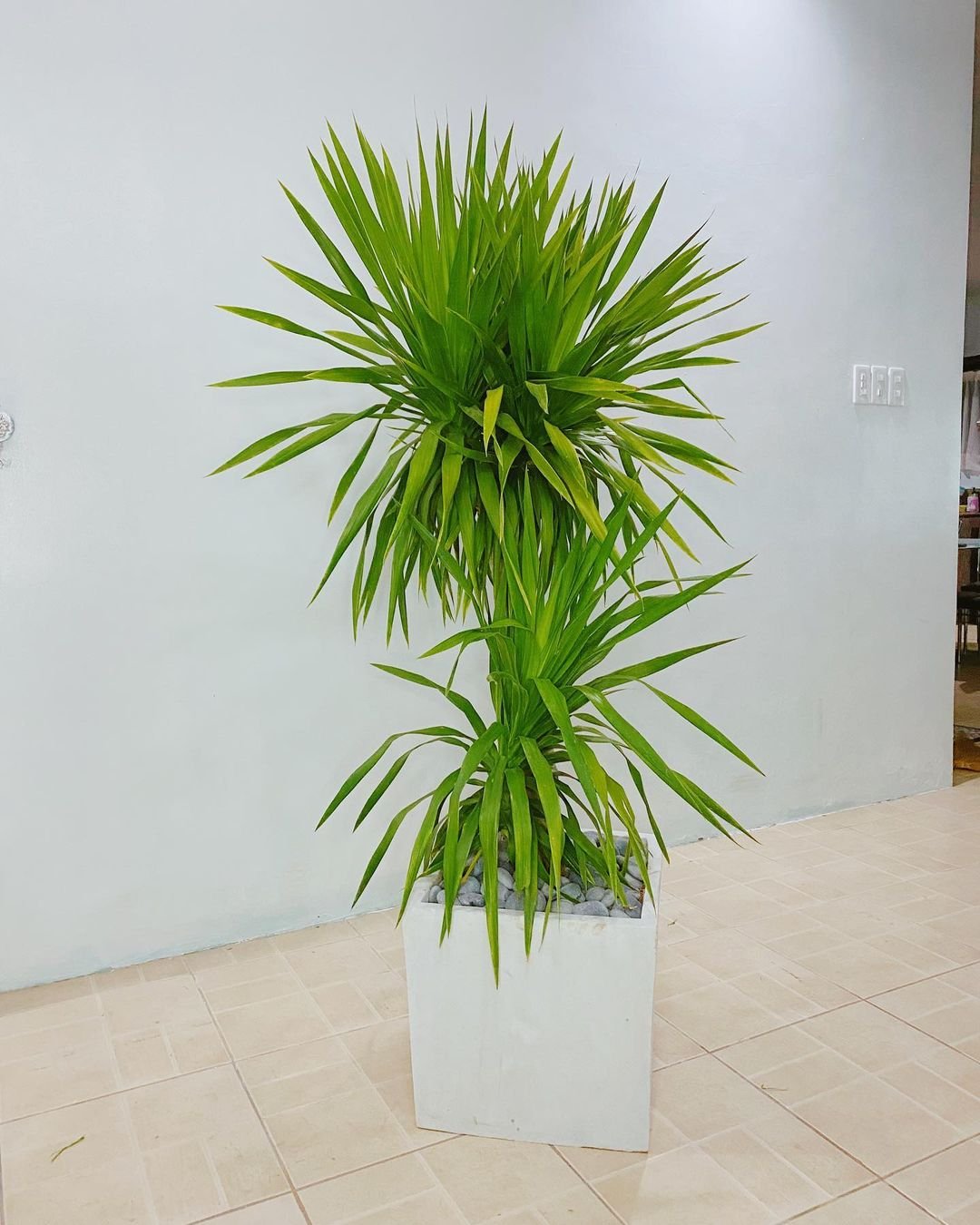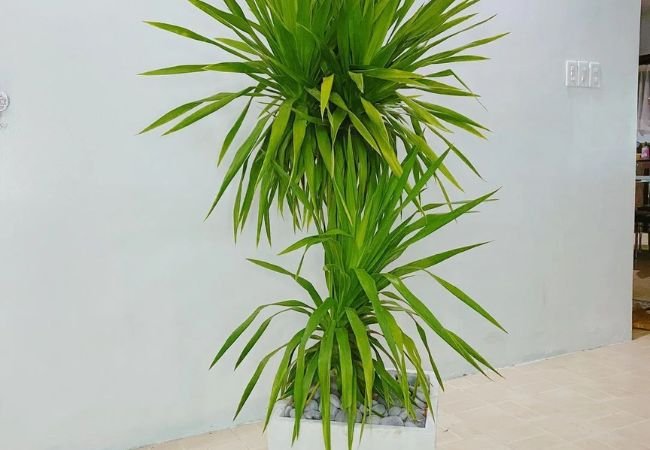Learn how to easily grow and care for yucca plants – the tough, architectural succulents perfect for hot, dry climates. This guide covers planting, growing requirements, and maintaining yuccas in gardens or containers.
With their striking sword-like leaves and tall branching stems, yucca plants add bold architectural flair to landscaping in warm, sunny climates. These rugged succulent evergreens are remarkably low-maintenance too, making them an excellent choice for gardeners with limited time.If you’d like to add the dramatic look of yuccas to your yard, this guide will walk you through everything you need to know – from planting and growing requirements to routine care and maintenance. Let’s dig in!
Here’s a short chart with information about Yucca plants (Yucca spp.):
| Aspect | Information |
|---|---|
| Botanical Name | Yucca spp. |
| Common Names | Yucca, Spanish Dagger, Adam’s Needle |
| Plant Type | Perennial shrub or tree |
| Zones | 4-11 (varies by species) |
| Exposure | Full sun |
| Bloom Time | Summer |
| Height/Spread | 1-30 feet tall, 2-15 feet wide (varies by species) |
What are Yucca Plants?

Yuccas are a genus (Yucca spp.) of around 40-50 different species of perennial shrubs and trees all belonging to the asparagus family. Naturally occurring in hot, arid regions of North and Central America as well as the Caribbean, they’re remarkably tolerant of drought, poor soil and heat.
Most yucca varieties form a dense rosette of rigid, sword-shaped leaves with white fibrous threads along the margins. The cup or bell-shaped creamy white flowers appear on tall stems rising above the foliage, blooming over an extended summer period.
While their long, pointed leaves can appear menacing, most yucca species have soft, flexible leaves rather than sharp spines. Only a handful like Spanish Dagger and Buckley’s yuccas have severely prickly and potentially dangerous foliage.
Some of the most popular yucca varieties for landscaping include:
- Adam’s Needle (Yucca filamentosa) – A compact, clumping yucca with blue-green bristly leaves and tall spikes of white bell-shaped flowers.
- Spanish Dagger (Yucca gloriosa) – Sports incredibly rigid, blue-green leaves tipped with viciously sharp spines. Yellow-white hanging blooms appear in spring.
- Soap Tree Yucca (Yucca elata) – Beautiful ornamental yucca tree with multiple trunks topped by rosettes of blue-green leaves. Tall spikes of white bell-shaped flowers.
- Red Yucca (Hesperaloe parviflora) – Not a true yucca but a close relative with soft green leaves and dense spikes of coral-red tubular flowers.
When to Plant Yuccas
The best times to plant yucca plants are in early spring or late summer/early fall once extreme summer heat has passed. Spring plantings give new transplants time to root in and settle before hot weather arrives.
Fall plantings allow the yuccas to establish robust root systems over winter, emerging with lots of topgrowth come spring. Avoid planting in the peak of summer heat which can stress young plants.
Where to Grow Yuccas
Yuccas need full sun locations that receive at least 6 hours of direct sunlight per day, more is better. They’ll grow in partial shade but with fewer flower spikes and floppy, etiolated growth.
Hot, dry climates and soil conditions suit yuccas best. They originate from arid desert and coastal environments and don’t tolerate excessive moisture well. Areas with humid summers are very challenging for yuccas.
Most species are extremely drought tolerant once established and thrive with infrequent watering. But they cannot tolerate soggy, poorly drained soils which cause root rot issues.
Accommodate yuccas’ need for fast-draining soil by amending heavy clay or compacted areas deeply with compost, aged manure or potting mix prior to planting. Or consider raised beds or large containers instead.
How to Plant Yuccas
For garden beds or landscaping areas space individual yucca plants about 5-10 feet apart depending on their estimated mature size. This gives them enough room to grow without overcrowding.
Plant yuccas at the same depth they were originally growing, ensuring the plant crown sits at or just slightly above the soil surface. Backfill firmly around the rootball, tamping down gently as you go.
For container plantings, choose a pot at least 12 inches wide and deep to accommodate the plant’s extensive root system as it matures. Use a fast-draining cactus/succulent potting mix and plant at the same depth as the nursery pot.
After planting, water the yuccas generously to settle the soil, then hold off on additional irrigation for about 2-3 weeks. This dry period helps reduce transplant shock and encourages the roots to spread out in search of moisture.
Routine Yucca Care
Once established, yucca plants are remarkably low-maintenance with few needs beyond providing the right environmental conditions.
Watering
Deep but infrequent watering is best for yuccas. Allow the top 2-3 inches of soil to dry out completely between waterings, then apply enough to thoroughly moisten the rootzone each time.
During periods of very hot, dry weather, you may need to water more frequently to prevent severe wilting. But in general, yuccas are highly drought tolerant and require little supplemental irrigation once mature.
Potted yuccas need more frequent watering than in-ground plants since the limited soil dries out faster. Check containers weekly during the growing season and water deeply when the top inch or two of soil is dry.
Fertilizing
Yuccas have moderate fertilizer needs but too much nitrogen encourages weak, floppy growth. Apply a balanced fertilizer formulated for cacti and succulents in early spring just as new growth begins.
In garden beds, scratch in a balanced granular fertilizer around the drip line and water it in thoroughly. Containerized yuccas can receive diluted liquid fertilizer according to product instructions, being careful not to over-fertilize.
A light layer of compost or aged manure can provide beneficial nutrients too. But don’t overdo it as excessive organic matter holds too much moisture for yuccas’ liking.
Pruning & Maintenance
Light pruning of dead, damaged or unsightly leaves and flower stalks is helpful to keep yuccas looking neat. Use sharp pruners to cut clean through the leaf base, being careful of potential spines if present.
Mature yucca clumps can be manually divided every 3-5 years in spring or fall to reinvigorate them and create more plants. Carefully dig up the entire clump and use a shovel or pruners to split it into sections with attached roots.
After dividing or transplanting, wait 2-3 weeks before resuming normal watering to prevent rot and allow new root growth to occur.
Common Pests & Problems
With their tough, leathery foliage and drought tolerance, yuccas tend to have very few pest or disease issues in most climates. Potential problems include:
Rot – Overly wet, soggy soil causes the thick, fleshy roots to decay. Improve drainage and stop overwatering. Cut away diseased roots.
Leaf Spots – Various fungal leaf spots and blights can appear, promoted by excessive moisture. Apply fungicide if severe. Improve air circulation and sanitation.
Scale & Mealybugs – Use insecticidal soap, neem oil or horticultural oil to control these sap-sucking pests. Dislodge manually with a strong water stream.
Spider Mites – Dusty foliage and dry conditions promote spider mite infestations. Spray with horticulture oils or insecticidal soap as needed.
Deer & Rodents – Due to their prickly nature, yuccas tend to be avoided by deer and rodents though they may occasionally browse the flowers.
That covers the essentials on how to successfully grow these striking architectural plants! With their rugged durability and easy care, cold-hardy yucca varieties are an excellent way to add bold texture and drought-tolerant beauty to arid climate gardens. Let me know if you have any other yucca questions!








Leave a Reply